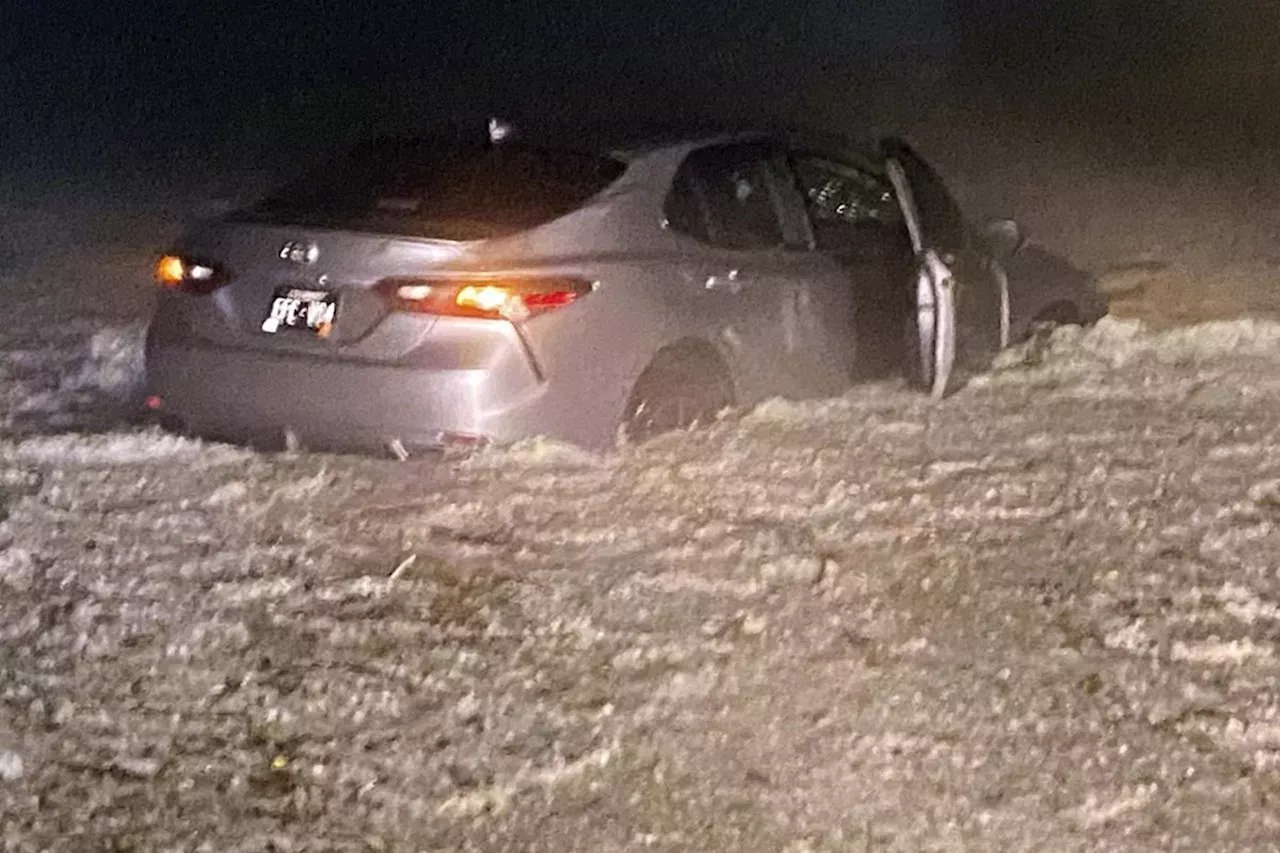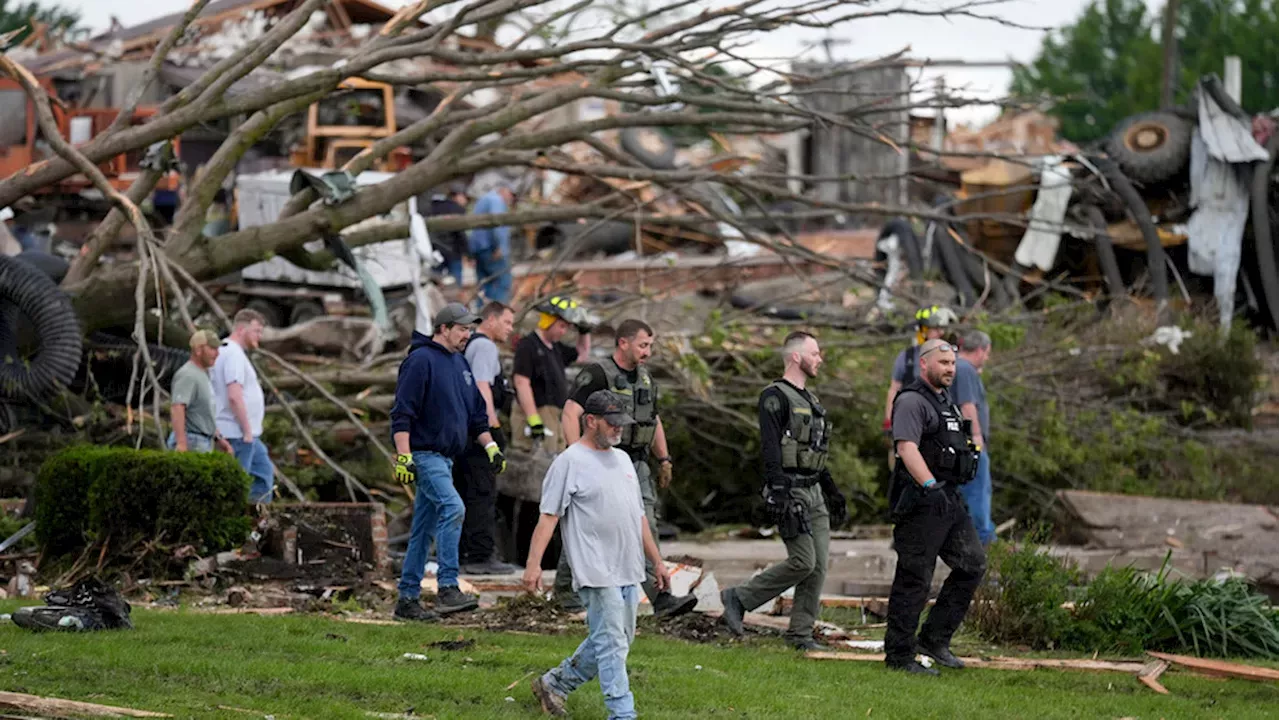Introduction
Greenfield ia tornado damage – Greenfield areas, characterized by undeveloped land and minimal human infrastructure, play a crucial role in tornado damage assessment. Understanding the impact of tornadoes on greenfields helps scientists and policymakers better grasp the dynamics of these destructive storms and develop effective mitigation strategies.
The recent tornado that ravaged Greenfield, Iowa, has left a devastating trail of destruction in its wake. The storm, which touched down on the evening of March 5th, caused widespread damage to homes, businesses, and infrastructure. Greenfield tornado damage was particularly severe in the city’s downtown area, where several historic buildings were destroyed.
The tornado also caused extensive damage to the city’s power grid, leaving thousands of residents without electricity. Emergency crews are working around the clock to restore power and clear debris, but the recovery process is expected to take weeks or even months.
Greenfields, often consisting of open fields, forests, and natural landscapes, provide valuable insights into the behavior of tornadoes in their natural, undisturbed state. By studying tornado damage in greenfields, researchers can isolate the effects of human-made structures and focus on the fundamental processes that drive tornado formation and intensity.
Damage Assessment Methods

Assessing tornado damage in greenfield areas poses unique challenges due to the lack of established infrastructure and limited access to resources. Various methods are employed to evaluate the extent of damage, each with its own advantages and limitations.
Remote Sensing, Greenfield ia tornado damage
Remote sensing techniques, such as aerial photography and satellite imagery, provide a comprehensive overview of the affected area. Aerial surveys allow for rapid damage assessment and can identify large-scale patterns, such as the path and intensity of the tornado. Satellite imagery offers high-resolution data that can be used to detect subtle changes in vegetation and land cover, indicating areas of potential damage.
Challenges: Remote sensing can be limited by cloud cover, vegetation density, and image resolution. Additionally, it may not provide detailed information on the severity of damage to individual structures.
Ground Surveys
Ground surveys involve physically inspecting the affected area to assess the extent and severity of damage. This method allows for detailed documentation of damage to buildings, infrastructure, and vegetation. Ground surveys also provide an opportunity to interview residents and collect eyewitness accounts.
Challenges: Ground surveys can be time-consuming and labor-intensive, especially in large or remote areas. Access to the affected area may be limited due to debris, downed trees, or safety concerns.
Structural Assessment
Structural assessments focus on evaluating the integrity and safety of buildings impacted by the tornado. Engineers and building inspectors examine the structural components of buildings, such as walls, roofs, and foundations, to determine the extent of damage and potential risks.
Challenges: Structural assessments require specialized expertise and can be costly. They may also require access to specialized equipment, such as drones or thermal imaging cameras, to assess damage in hard-to-reach areas.
Damage Patterns: Greenfield Ia Tornado Damage

Tornadoes can leave distinct damage patterns in greenfields, depending on the intensity and characteristics of the tornado. These patterns can provide valuable information for damage assessment and understanding the behavior of the tornado.
The devastation caused by the tornado that tore through Greenfield, Iowa, is a stark reminder of the destructive power of nature. The community has come together in the aftermath to support those affected by the greenfield iowa tornado damage , and efforts are underway to rebuild and restore the town to its former glory.
The resilience of the Greenfield community is an inspiration to us all.
Swath Width
The swath width refers to the width of the area affected by the tornado. It can vary significantly, ranging from a few meters to over a kilometer. The swath width is influenced by the size and intensity of the tornado, as well as the topography and vegetation in the area.
Path Length
The path length is the distance over which the tornado travels. It can extend for several kilometers or even hundreds of kilometers. The path length is determined by the duration and strength of the tornado, as well as the terrain it encounters.
Damage Intensity
The damage intensity refers to the severity of the damage caused by the tornado. It is typically classified using the Enhanced Fujita Scale (EF Scale), which ranges from EF0 to EF5, with EF5 representing the most intense tornadoes.
The devastating tornado that tore through Greenfield, Iowa, left a trail of destruction in its wake. Homes were reduced to rubble, businesses were destroyed, and lives were tragically lost. As the community struggles to recover, it is important to remember the resilience of the people of Greenfield.
In the face of such adversity, they have come together to support one another and rebuild their lives. Greenfield ia tornado damage is a reminder of the power of nature and the importance of community.
Debris Patterns
Tornadoes often leave behind debris patterns that can provide clues about the direction and intensity of the storm. For example, debris may be scattered in a radial pattern around the tornado’s path, or it may be deposited in a line indicating the direction of travel.
The destructive force of the tornado that tore through Greenfield, Iowa, left a trail of devastation in its wake. Homes were reduced to rubble, businesses were destroyed, and the community was left reeling from the impact. In the aftermath of the storm, residents turned to maps to navigate the damaged areas and assess the extent of the destruction.
One such map, available at greenfield iowa map , provided a detailed overview of the affected neighborhoods, helping residents and emergency responders alike to coordinate relief efforts and begin the long process of rebuilding.
Tree Damage
Trees are often heavily damaged by tornadoes, and the type of damage can provide information about the strength of the storm. For example, trees may be uprooted, snapped, or stripped of their leaves and branches.
Ground Scouring
In some cases, tornadoes can cause ground scouring, where the topsoil is removed, exposing the underlying soil or rock. This can be a significant indicator of the intensity of the tornado.
Impact on Vegetation
Tornadoes can cause significant damage to vegetation in greenfield areas. The force of the wind can uproot trees, snap branches, and shred leaves. The resulting damage can have a significant impact on the local ecosystem, as well as on the aesthetics of the area.
The type of vegetation damage caused by a tornado will vary depending on the strength of the storm and the type of vegetation present. In general, however, tornadoes are most likely to cause damage to trees and other large plants. Trees can be uprooted or snapped off at the trunk, and branches can be broken or twisted. Leaves can be shredded or stripped from the trees, and even the bark can be damaged.
Implications of Vegetation Damage
The damage to vegetation caused by tornadoes can have a number of implications. The loss of trees can lead to soil erosion, as the trees no longer provide roots to hold the soil in place. This can lead to increased flooding and sedimentation, which can damage infrastructure and waterways.
Greenfield, Iowa was hit by a tornado on July 19, 2022, causing widespread damage to the town. The tornado, which was rated EF-3, touched down just south of Greenfield and moved through the town, damaging homes, businesses, and infrastructure. Greenfield iowa tornado damage was severe, with many homes and businesses destroyed.
The tornado also caused power outages and downed trees, making it difficult for residents to clean up and recover. Greenfield, Iowa is still recovering from the tornado damage, and it will likely be some time before the town is fully rebuilt.
The loss of trees can also have a negative impact on wildlife. Trees provide food and shelter for many animals, and their loss can lead to a decline in wildlife populations. In addition, the loss of trees can make an area more susceptible to wildfires, as there is less vegetation to act as a firebreak.
Environmental Implications
Tornado damage in greenfields can have profound environmental consequences, affecting soil erosion, water quality, and wildlife habitats.
The force of the tornado can strip away topsoil, exposing the underlying subsoil. This can lead to increased erosion, as the exposed soil is more susceptible to being carried away by wind and water. Erosion can damage crops, pollute waterways, and contribute to the loss of biodiversity.
Impact on Water Quality
Tornadoes can also damage water quality. The runoff from damaged areas can carry sediment, nutrients, and other pollutants into waterways. This can lead to increased turbidity, algal blooms, and fish kills. In some cases, tornadoes can also damage water treatment facilities, leading to contamination of drinking water.
Impact on Wildlife Habitats
Tornadoes can also have a devastating impact on wildlife habitats. The destruction of trees and other vegetation can remove shelter and food sources for animals. This can lead to population declines, changes in species composition, and the loss of biodiversity.
Recovery and Mitigation Strategies

Recovery and mitigation strategies for tornado damage in greenfield areas involve a multifaceted approach that addresses both the immediate aftermath and long-term resilience. By implementing proactive measures and collaborating with various stakeholders, communities can minimize the impact of future events and promote sustainable recovery.
Effective strategies include:
Land Use Planning
- Designating greenfield areas for low-density development, reducing population exposure to potential tornado hazards.
- Establishing setbacks and buffer zones around waterways and natural features, providing natural barriers to tornado winds.
- Implementing strict building codes and zoning regulations that mandate tornado-resistant construction practices.
Building Codes
- Enforcing building codes that require tornado-resistant construction techniques, such as reinforced concrete foundations, steel framing, and impact-resistant windows.
- Promoting the use of storm shelters and safe rooms in new and existing buildings.
- Establishing building codes that address the specific risks associated with tornadoes, such as wind speeds and debris impact.
Community Education and Preparedness
- Educating the public about tornado risks and preparedness measures.
- Developing emergency response plans and evacuation procedures for tornadoes.
- Conducting regular tornado drills and exercises to ensure community readiness.